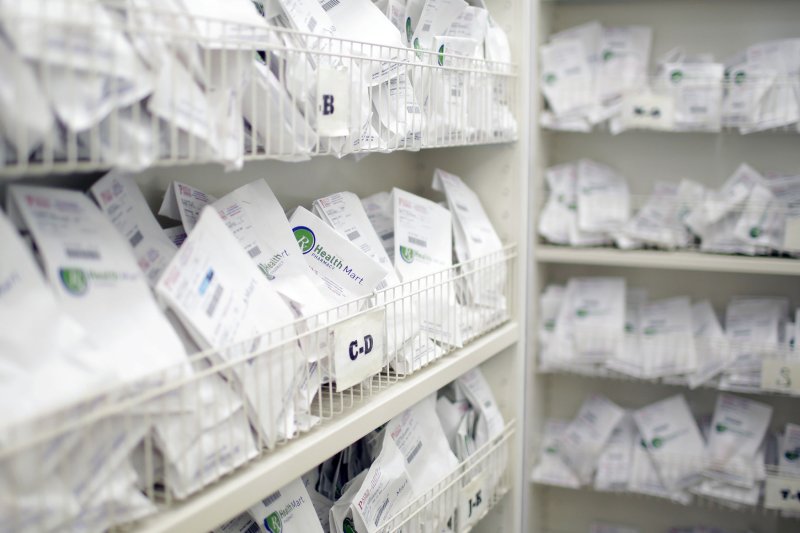The U.S. Food and Drug Administration wants to make more prescription drugs available over the counter and without physician approval. File Photo by John Angelillo/UPI |
License Photo
July 17 (UPI) -- The U.S. Food and Drug Administration wants to simplify the process of making some prescription drugs available over the counter and without physician approval.
The FDA on Tuesday released draft guidelines on how a streamlined process could be beneficial for consumers, and could lead to savings on drug and care costs.
The FDA specifically noted cholesterol-lowering drugs and the prescription drug naloxone, an opioid-overdose antidote, as good candidates to make available over the counter. In many states, the antidote Narcan already does not need a prescription.
"Our hope is that the steps we're taking to advance this new, more modern framework will contribute to lower costs for our healthcare system overall and provide greater efficiency and empowerment for consumers by increasing the availability of certain products that would otherwise be available only by prescription," Dr. Scott Gottlieb, the FDA's commissioner, said in a statement.
But the federal agency still wants to maintain the same safety rules because many drugs require a professional diagnosis and oversight for proper use. Other drugs, however, could be appropriate for nonprescription use if resources are provided to help consumers make decisions.
Part of this effort, Gottlieb said, will include plans to utilize digital health technologies to assist consumers. These apps, he said, could include a set of questions to help a person self-select whether the drug is appropriate for them.
Because nonprescription drug products are used without the supervision of a healthcare professional, Gottlieb said they "require a very high safety margin that takes into consideration the potential consequences of inappropriate use, the ability of the consumer to determine that they have the condition for which the drug is to be used, and the expected effectiveness of the product when used under nonprescription conditions."
Drugmakers would first need to have their drugs approved with prescriptions, and then submit data to show the FDA people can and will use the medication correctly.
Currently, nonprescription drugs can be marketed through the Over-the-Counter Drug Review or the New Drug Application process. The new guidelines only apply to the NDA process -- therapeutic indications that have not, historically, been available for use without a prescription.
The FDA said it plans to develop rules on the process but didn't give a timetable on action.
From the mid-1970s to mid-2000s, switches from prescription to OTC were common, including medication for pain, allergy, heartburn, skincare and smoking cessation. Since 2008, there have only been 14 changes, and they were mainly for allergies and colds.
Among widely used nonprescription drugs, Flonase for hay fever was approved in 2016, emergency contraceptive Plan B in 2006, Claritin antihistimine in 2004, heartburn remedy Prilosec in 2003, smoking cessation drug Nicotrol in 2002. The most recent approval was the Xyxzal allergy medicine last September.
In 2012, the FDA launched the Nonprescription Drug Safe Use Regulatory Expansion for several drugs, including migraine treatments, statins, erectile dysfunction drugs, sleep aids and medication to treat other chronic conditions.
With more than 300,000 marketed OTC drug products, the FDA said it reviews the active ingredients and the labeling of more than 80 therapeutic classes of drugs.















